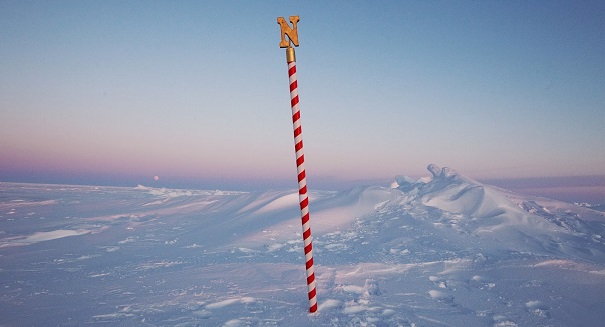
Denmark challenges Canadian and Russian claims to the North Pole while rich energy deposits await their claim.
In a major challenge to Russia and Canada, the Foreign Minister of Denmark, Martin Lidegaard, said that because the continental shelf of Greenland – a semi-autonomous Danish country – connects to a ridge in the Arctic Ocean, his country now claims the North Pole as its own, as well as the energy resources beneath it. He said that his country would submit a claim next week to a panel of the United Nations (UN) in New York, one which would ultimately determine control of the area. Russia, the United States (U.S.), Canada, Norway, and Denmark all have landmasses around the North Pole, but only Russia and Canada have registered interest in the landmark before Denmark’s latest move.
Scientists from Sweden, Denmark, Canada and Russia studied an underwater mountain range north of Siberia from 2007 to 2012. The report showed that Greenland is attached to the ridge, thus prompting the Danish government to proclaim its right to exploitation of a 345,600 square mile area.
Claims over the North Pole and its surrounds are not inconsequential, as the energy is rich in petroleum. A 2008 report from the U.S. Geological Survey estimated that 22 percent of the world’s recoverable and undiscovered lay above the Arctic Circle. The North Pole itself, however, is not likely to harbor very much gas or oil in its deep waters.
In the spotlight is the Lomonosov Ridge, an enormous (1,800 km or 1,120 miles-long) underwater mountain range that splits the Arctic region in two. Lidegaard charaterized the claim as an “historic and important milestone” for his country. He holds no expectations of a fast decision from the U.N.
As part of its official submission, a Danish political team on Monday presented the UN with three boxes of documents. The 21-member UN panel charge with investigating the competing North Pole claims will decide if the scientific evidence is valid. Yet the outcome can likely be far from definitive. If, as is likely, the various claims overlap, the relevant nations will then need to negotiate.
Citing data aggregated since 2002, Denmark’s claim is to an approximate 895,000 square km (346,000 square miles) area. This is approximately 20 times the size of Denmark itself. The main countries involved (Denmark, Norway, Russia, the U.S. and Canada) agreed in 2008 to settle the territorial dispute under the Convention on the Law of the Sea of the UN.
Once a country has ratified the convention, it then has 10 years to submit its assertion that an extension of its continental shelf – 200 nautical miles beyond its borders – is correct and justified. Canada submitted its claim last year and Denmark’s deadline is looming.
Jon Rahbek-Clemmensen an assistant professor of War Studies at Copehnhagen’s Syddansk University, focuses his research on Arctic security and Danish defense and security policy. He said the Danish government has pushed its claim, in part, to demonstrate on the global stage that Denmark would not be pushed around but, also, to show muscle to the people of Greenland in the context of its strong independence sentiment. Even if unsuccessful, Denmark’s push on Greenland’s behalf would communicate from Copenhagen that ” … we’re on your team,” he said.
Leave a Reply